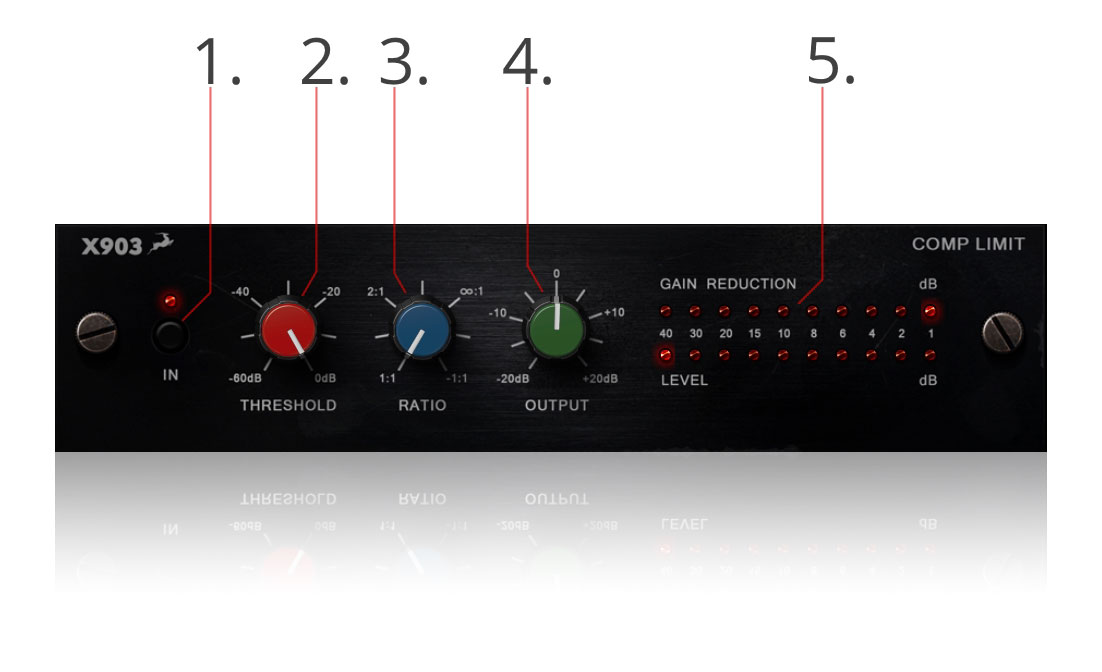5. Usage Tips
5.1 Threshold
The Threshold control sets the level at which the X903 starts compressing the signal you are processing.
At low compression ratios, a very low threshold setting can gently reduce the overall dynamic range of your audio.
Higher compression ratios coupled with low threshold settings provide levelling for instruments and vocals.
High threshold settings are generally used for limiting. Compression at low threshold settings tends to sound less natural at ratios of 10:1 or greater.
The X903 uses a soft knee at the compression threshold. This means it gradually increases the compression ratio from 1:1 towards the selected ratio as the input signal rises through the threshold region.
With this compressor, the threshold is defined as the point approximately midway between fixed gain and the point at which the curve levels off to the selected compression ratio. At the Infinity:1 setting, the maximum permitted output level is 5dB above threshold with the Output gain set to 0.
5.2 Compression Ratio
A setting of Infinity:1 means the input signal must reach an infinitely high value for a 1dB increase in output level to be produced.
High compression ratios (6:1 or greater) and low threshold settings reduce dynamic range and prevent output signals from substantially exceeding the threshold setting. Low compression ratios (4:1 or lower) affect dynamic range to a lesser degree.
High compression and low threshold are typically used to tighten up the sound of the bass guitar, snare drum, or vocal.
At the extreme clockwise Ratio Control rotation, a -1:1 Output to Input ratio is achieved. This way, the X903 reduces the output level by 1dB for every 1dB that the input signal increases above the Threshold setting. Thus, the X903 output will start rising in level with the input until it begins to approach the Threshold setting.
At this point, output level will begin decreasing with further increase in input level. At a relatively low threshold setting, the dynamics of some instruments will become inverted for an effect similar to tape being played backwards.

